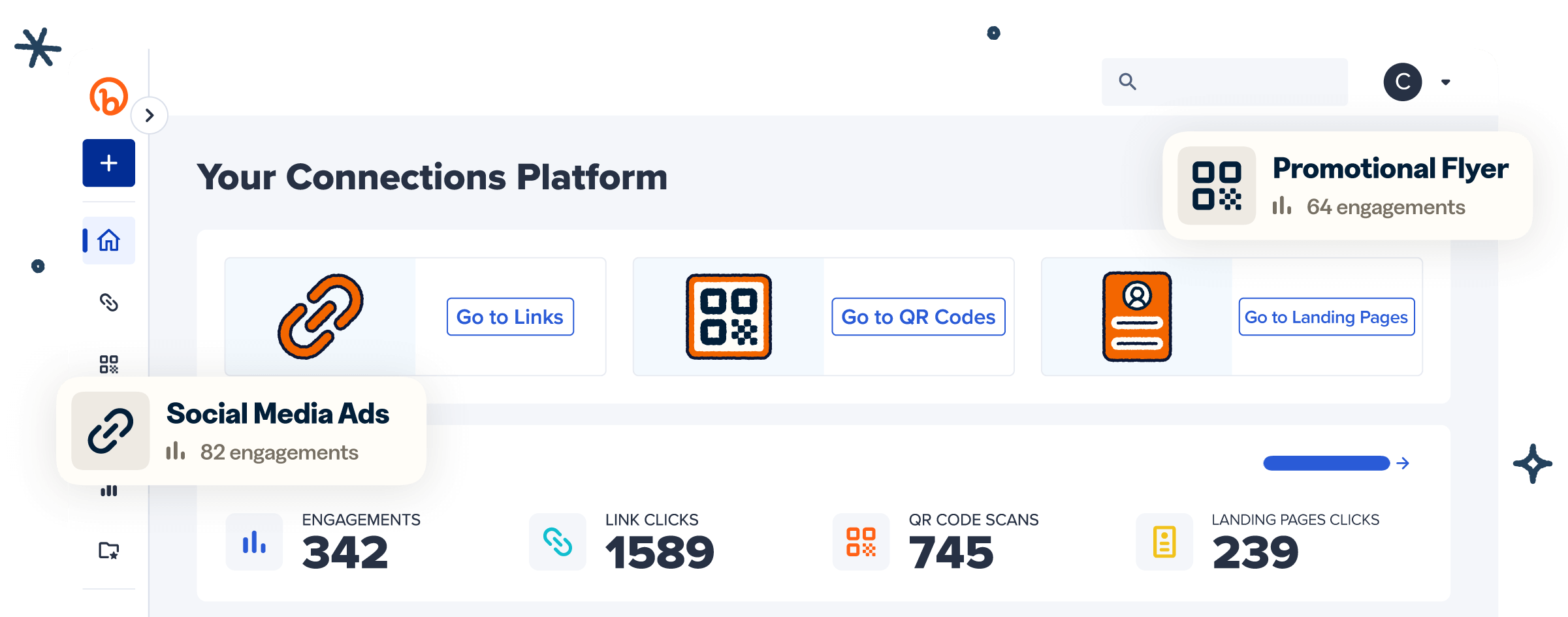It’s a situation many businesses have been in: The holiday season is fast approaching, customers are flocking into your store, and online orders are flooding in. While you’re excited about the sudden increased sales, you notice several issues that affect customer satisfaction: overwhelmed customer support staff, delayed shipping, and unending calls from clients.
However, with a well-planned approach, you can turn your worries into golden opportunities. A holiday customer service strategy not only prevents a lot of stress but also sets room for long-term success.
This article explores the importance of preparing for the holiday rush and how to create an effective customer service strategy.
Are customer expectations different during the holidays?
A lot changes for both retailers and shoppers during the holiday season. You expect higher foot traffic both online and in-store, more support requests, and increased consumer spending. Forbes reports that retail sales in the U.S. increased by 3.1% during the 2023 holiday season, mainly because of skyrocketing spending and retail promotions.
Similarly, consumer behaviors and expectations change during this time of the year. Purchase planning starts earlier, motivations change dramatically, and impulse buying kicks in—59% of Americans admit to impulsive holiday shopping.
Further, online shopping tends to increase during the holiday season as it offers a wider availability of products, delivery convenience, and pricing comparability. Customers also don’t want to spend time waiting in long lines at stores.
Besides excellent customer service, which runs all year round, consumers expect personalized offers, special promotions, and a seamless holiday shopping experience.
Finally, value for money and quality are key determinants of how a customer shops and spends money.
Why you should prepare your team for the holiday rush
Whether it’s Cyber Monday, Black Friday, Christmas, or New Year, maintaining customer satisfaction is essential. It improves your brand reputation and leads to a higher customer retention rate—65% of U.S. citizens are likely to spend on businesses they’ve had positive experiences with!
Equip your team members appropriately to ensure you win more customers even after the holiday season. Here’s how:
Streamlined communication channels
As competition increases during the holiday season, it’s important to have multiple integrated communication channels in place for effective customer support. Streamlining your communication tools allows your reps to resolve customer issues promptly and maintain the best customer experience during the peak season.
Clients expect consistently short response times to their queries, whether through email, live chat, phone, or social media—70% of them want a solution for their issues on the very same day.
Clear, concise, and consistent messaging across all customer service touchpoints ensures a cohesive customer experience while avoiding confusion and frustration from your customers.
Proactive customer service
Anticipating and addressing customer issues before they escalate is an effective approach for enhanced customer satisfaction during the holiday season. Strategies such as setting up a section for frequently asked questions (FAQs) and sending preemptive email notifications about common holiday issues can help you stay ahead of customer concerns.
In addition, tools like Bitly can help your reps track the engagement and performance of your content, giving you an idea of the areas you should focus more on. These strategies demonstrate that your support team members are committed to providing a seamless holiday shopping experience and fostering customer loyalty.
Personalized customer experiences
Personalizing customer interactions is important for improved satisfaction and loyalty. Business leaders suggest that 80% of clients are likely to spend more when interactions are based on their interests, and 76% of customers may feel frustrated if businesses don’t meet this expectation.
So, your customer service team should use data to understand consumer history and preferences and tailor their interactions to meet customer expectations. Whether it’s addressing clients by name, offering personalized promotions, or recommending relevant products and services, these efforts show that you value your customers as individuals.
Responsive to feedback
Actively listening to and acting on customer feedback is essential for your business during the holiday season. It helps you:
- Improve your products and services: They can share how they feel about what you offer and suggest areas of improvement.
- Monitor customer satisfaction: You can learn if clients are happy with your services through rate-based questions, for example.
- Show that you value their opinions toward your business: This helps strengthen your relationship with customers.
- Create a better customer experience: Acting on feedback makes audiences feel valued, improving their overall experiences.
- Enhance customer retention: Customers will likely stick with you if you value their opinions.
You can use emails, feedback forms, surveys, and customer service and interactions to collect, analyze, and respond to feedback for continuous improvement.
Better performance
Setting clear goals and metrics for holiday customer service allows your reps to measure success and drive improvement. The continuous monitoring and analysis of the set objectives can help you and your team members identify strengths and weaknesses, leading to better performance.
Leveraging tools like Bitly Analytics can help you track customer engagement and satisfaction levels. For example, Bitly allows you to track how your short links are performing, who’s engaging with them, and where they’re engaging from. With this data, you can make informed decisions and deliver holiday customer service that exceeds expectations. For example, if you find that you get a surge of traffic to a holiday promo page from St. Louis, you may decide to push additional promotions for your in-store locations in Missouri as an easy way to boost the customer experience in that area.
How to build a strategy for holiday customer service in 4 steps
With increased customer expectations and marketplace competition, taking your e-commerce business a step ahead is vital. You want to give existing and new customers a reason to shop with you again. To achieve this, you’ll need to go beyond the bare minimum: Understand your customer’s mindset and provide more than they want.
A customer service strategy can separate you from the competition and streamline your holiday customer service. Here are four steps that will help you come up with a personalized customer service strategy for the holiday season:
Step 1: Look at last year‘s holiday patterns
Start by taking note of trends you saw last holiday season. What was the volume of inbound support messages? Which social channels received the most messages? What were the most frequently asked questions?
Historical data can show you what’s been working well and what to do more of. You can also use this data to identify opportunities for improvement and test in the months leading up to the holidays. Cut through the holiday noise by knowing what your audience wants more of and where to share it with them.
Step 2: Create resources for your team members
Identify specific areas where you could enhance your customer service during the holiday rush and create resources for the team—for example, response times, issue resolution efficiency, or personalization.
Further, create a master checklist of training sessions, resources, and actions your team has to take before the season hits. Here’s what we’d include in a checklist to share with a customer service team:
- Meet with the buying or product teams to learn about top products and potential FAQs for the holiday season.
- Download a holiday guidelines document and keep it somewhere that will make it easy to refer to.
- Build a holiday guidelines document that reiterates your brand’s tone and voice, gives sample answers for frequently asked questions, and provides helpful links to know.
- Support team leaders in evaluating resources and ensuring that there’s enough workforce.
- Become familiar with the emergency plan—and develop one if you don’t have it yet. An emergency plan details what to say and who to contact in case of an unexpected issue or PR crisis.
Laying down the groundwork can help your social support team prepare for the busy months ahead.
Step 3: Give the right tools to your customer support team
Create a detailed training program for support staff, focusing on communication skills, product knowledge, and stress management. This ensures the team is well-prepared and consistent in its processes.
In addition, use chatbots and automation technologies to scale personal interactions during the holiday season. A less expensive route would be setting up a social media monitoring and scheduling tool. Tools like Mention and Buffer can help you find frequently asked questions and catch bugs that you need to address.
Your support team can also partner with your marketing team to use these tools to identify popular features and source influencers for your holiday campaigns.
Step 4: Implement tools and technology
Integrate tools and technology that will help streamline processes and enhance customer experience. For example, you can use website tracking tools like Google Analytics to monitor your business’s website traffic and how your pages are performing.
Bitly can also help you track engagement—like the number of clicks— and the effectiveness of your communication strategies. You can then use these analytics alongside more granular data from tools like Google Analytics to get insights into metrics like the click-through rate.
Create better experiences with impressive holiday customer service this season
While holidays offer opportunities for businesses to increase their sales, the season comes with numerous challenges. Endless support requests your team members have to deal with, along with logistical delays and overwhelmed reps, can all affect your business.
However, a customer service strategy can help you better prepare for the holiday rush. You can easily streamline your operations while exceeding customer expectations.
Leveraging tools like Bitly can help enhance customer experience, putting your e-commerce business a step ahead of the competition. With Bitly, you can track the engagement and effectiveness of your communication strategies during this time of the year.
View our pricing options and get started with Bitly today to create a lasting experience with impressive customer service.


